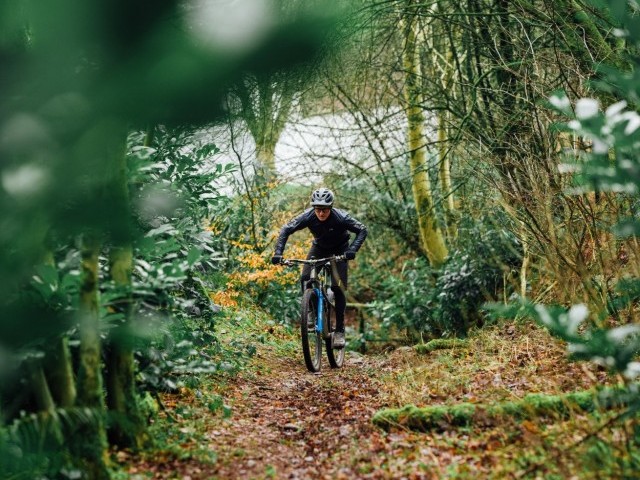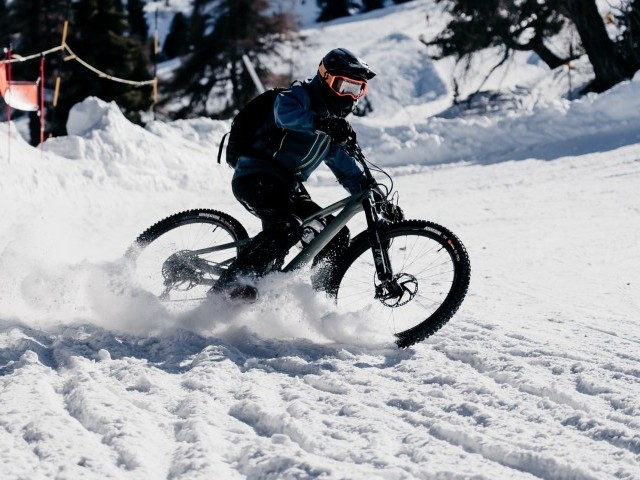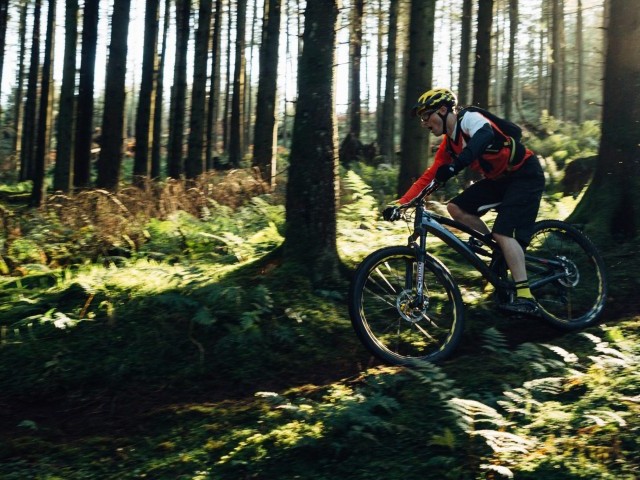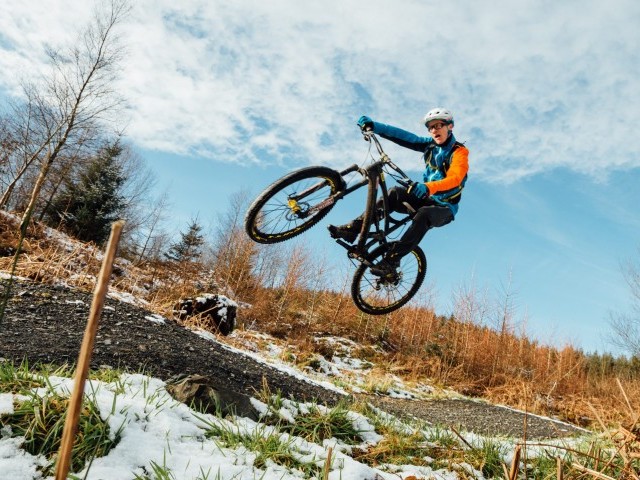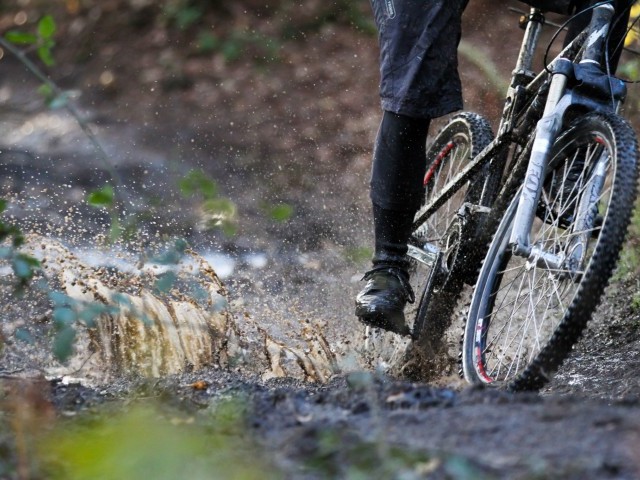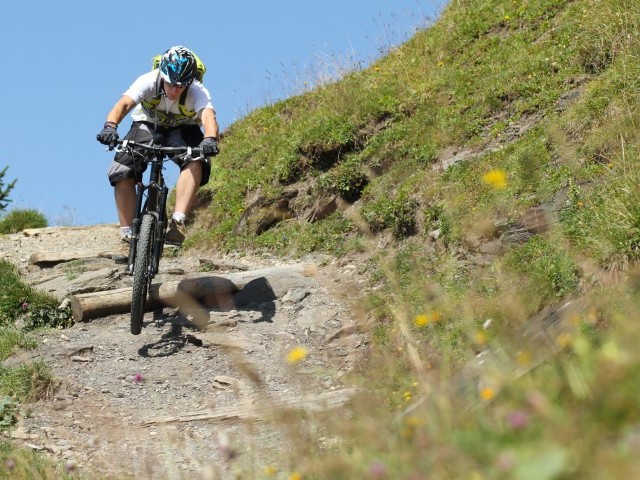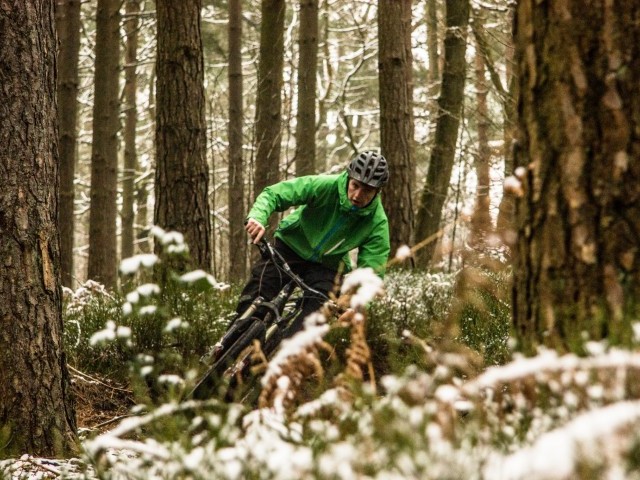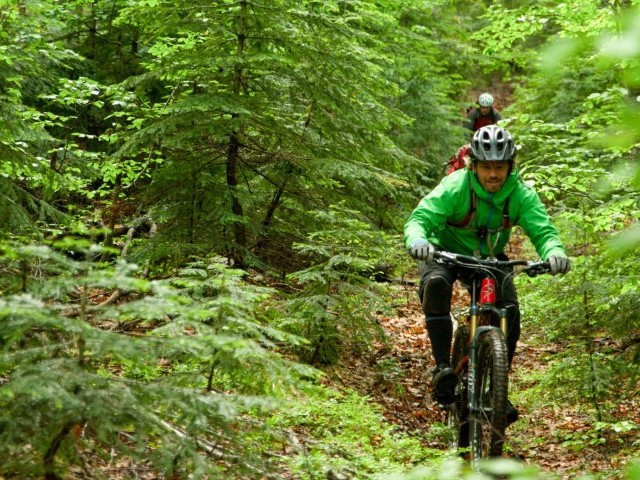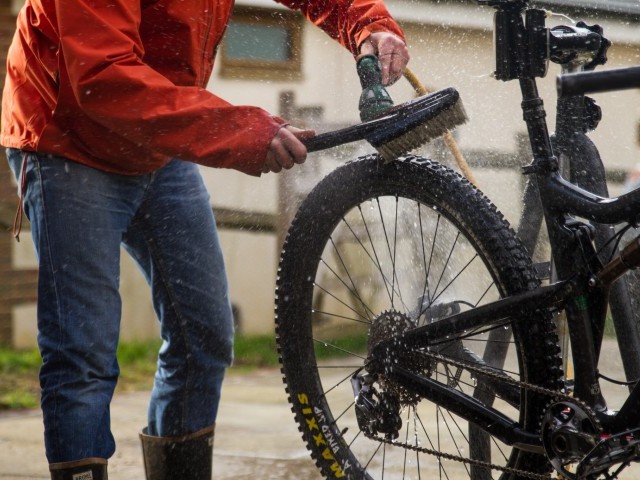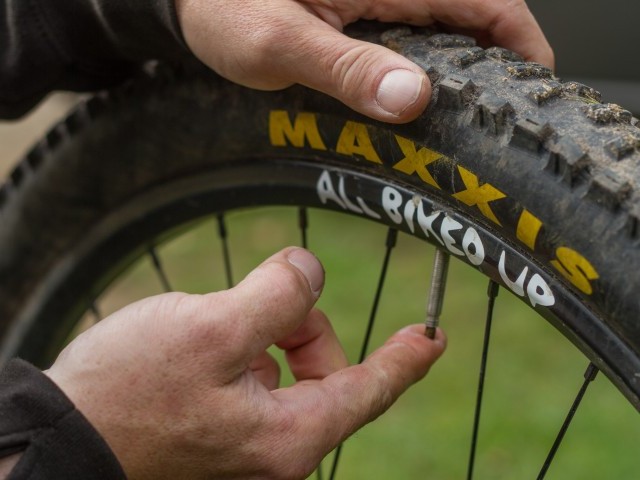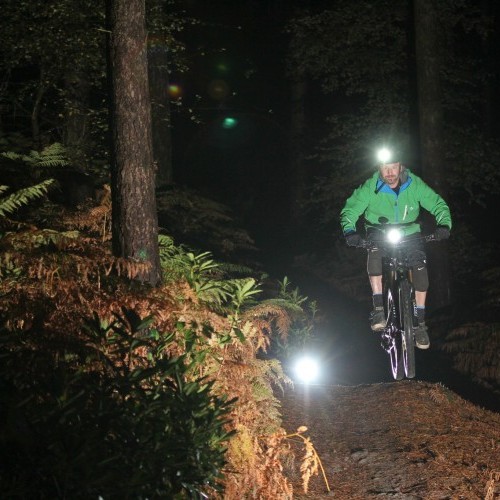
Night Riding
Technique / Seasonal Riding
Introduction
With the days in the Northern hemisphere shortening faster than the odds of a turkey seeing in the New Year, this issues technique feature looks at Night riding. Some of the article will look at which skills are required to get more out of riding at night, but equally, if not more important, is taking a look at how riding at night might benefit your riding more generally. We'll also look at some 'do's' and 'try to avoids' that will ensure your night ride is more of an authentic experience that enhances not just your riding life, but life in general.
The ‘how to’ elements will look at you and your equipment, the physical skill set and mental skills. The 'why to' considerations range from the more obvious to perhaps the more important, often overlooked, reasons that will benefit your riding, day or night.
For many the decision to hit the trails after dark starts as a practical one, there simply aren't enough available hours of light to get your fill of trail time. This leaves three options, ride less than you want, skip work, or ride after dark. The first is clearly not a realistic option, the second relies on being the boss of the company or being prepared to lose your job (not ideal). This leaves only one likely outcome...night riding.
Pretty much from the first time you strap on some lights and head out after dark the decision becomes one not of needs, but of musts. Once discovered, the joys and draw of riding after dark become hard to resist. Even in the foulest of conditions riders will break up their working week and add a weekly night ride as a permanent fixture in their diary. It becomes not just a need to ride per se but a desire to embrace the unique sensations that riding after dark brings.
Ride Preparation
Preparing for a night ride needs to start earlier than riding under natural light. There are also a few additional considerations from your normal daytime fix of two wheeled shenanigans.
Starting with the obvious practical considerations, let us take a look at you and your equipment. Having the correct kit with you on your ride is really important whether riding during day or night, but when riding at night it's best to make like a Boy Scout and 'be prepared'.
At the risk of stealing party planner, Pippa Middleton's crown of 'champion in stating the obvious' (not her 'rear of the year' accolade- which to be fair is a close run thing too), the first point to think of is not just seeing where you are going, but also that of being seen.
Lights have come a long, long way in a relatively short space of time. The brightness and quality of light they provide has increased dramatically while the affordability of such enlightenment has fallen. It was not so long ago that a combination of 15w and 20w lamps gave you more light than you dreamed possible. The fact that the battery pack weighed as much as a modern frame and the burn time on max output matched that of the lifespan of a Rizla in a rainstorm was by the by.
Things have changed and if your lights are measured by Watts many would consider them totally unsuitable for practical use in the current era and closer to a Humphrey Davey mining lamp than what is on offer today.
These days it is all about lumens...thousands of them. Although no doubt these advances in lighting technology are welcomed by the vast majority, arguably they have changed something that was at the heart of the night riding experience. Having the power to turn night into day by shedding a couple of thousand lumens hundreds of yards down the trail takes the edge off an old school night riding experience. Back in the day there was more an element of not quite knowing what lay ahead. You had a rough idea of what was in front, but every detail of the trail was not illuminated and immediately clear. Better energy management skills were then obviously more important. Even when you are riding in virtual daylight staying fluid, not tensing and to a certain degree feeling your way down a trail are still important skills which will be considered in more detail below.
Modern or more antiquated, you want to make sure that your lights are fully charged. This doesn't just take minutes. Spontaneity and night riding are not good bedfellows. Many light manufacturers offer a second battery pack as an upgrade at point of sale. Shelling out an extra few quid for a second battery pack is a worthwhile consideration particularly if you like to ride longer or are more inclined to ride on the spur of the moment.
Lights are now available to suit all budgets. Although many of the cheaper lights now burn bright and will make night riding accessible to a wider audience, for piece of mind, when charging them putting them in a biscuit tin is not a bad idea. Horror stories of cheap lights catching fire when charging may be a myth perpetrated by more expensive manufacturers, but just in case they are founded in truth, err on the side of caution. If it can happen to cheaper lights so too it could happen to high-end lights. Don’t think just because your lights burnt a hole in your bank account there is no possibility that they wont burn down your house too! If you are charging your lights by day while out of the house would it really hurt to play it overly safe?
As well as your main source of illuminating the trail ahead, a secondary emergency light source is worth considering. A set of tiny LED’s wont cost more than a few pounds and, although by no means a tool for the job when it comes to blitzing your favourite trails, will be enough to see by at walking pace if all else fails. Light weight and low cost, emergency back up lights are essential in your kit if riding solo and a good idea even if out with a group. Most modern phones have a pretty powerful light on them that can be accessed and used as a torch. Carrying a phone in one hand and riding is not the best approach (but can be done) yet if you need to walk your bike home so be it. It is not, however, just a case of seeing what is ahead, but also being seen by what might be catching you up fast. If your ride is to take in any amount of road the rear LED will be enough for traffic approaching you to see you early. Country lanes get dark, very dark. No street lighting, tree cover, high banks and unchecked roadside vegetation all put the rider at more risk at night. Even the smallest of rear lights (often no bigger than a coin) could make the difference between being seen, or ending up in a hospital bed, or worse.
On-trail adjustments and tweaks should be kept to a minimum. The more you can do before the ride in the relative comfort of a workshop, shed or front room the better your night ride experience will be. Do your pre-ride bike check before you load up and leave to get to the trail head. It's easy to miss things when operating by torch light so checking your bike over fully before you go is the easiest solution.
In terms of set up, it’s pretty much a case of business as usual with the slight exception of perhaps softening your suspension a little and slowing your rebound at least until you have got used to riding after dark. Although lights are pretty powerful your peripheral vision will be what suffers most. You may well miss some of the smaller bumps and stalling effects that the trail holds. Softening your suspension and slowing your rebound might help with containing the negative effects this can cause. Additionally, if you are new to riding after dark (or just a bit scared of the Bogeyman) you might be riding a little tighter than usual. Gripping on tighter and riding with a higher level of anticipation leads to more abrupt and unsettling feedback from even smaller trail features. This exaggerates the stalling effect that they have on the bike. Adjusting the suspension set up will counter this, but at the end of the day (pun intended) you are treating a symptom, not the cause. Ultimately your aim must be to stay more fluid, breath, loosen your grip and use your arms and legs to better effect to counter the stalling effect of trail hazards.
With your lights and bike prepped it is worth taking a few minutes to sort out your personal kit. When it comes to riding at night it’s good to know what is where and that everything is where you think it is. In the event of a mechanical of any nature faffing around having to upend your entire backpack onto the trail to find that quick-link or tyre leaver is an unnecessary hassle. In short, the key to easily overcoming night time mechanical issues is the same as beating the antipodeans at rugby...have an organised pack!
At night the difference between ‘knowing it’s in there’ and ‘knowing where it is’ becomes more acute. During daytime rides your mates might appreciate the respite while you search around, by night the unscheduled break might not be welcomed quite so readily.
Just as organising your kit is important so too is what is in it. All your usual daytime trail tools should be present for sure. However, one extra that you may ride without during the day could quite literally be a lifesaver. Many riders will already be used to carrying a first aid kit. If you don’t its perhaps time you did and either way at the very least an emergency blanket is a good thing to carry especially at night. You don't need to be Sherlock Holmes to realise temperatures are likely to fall after dark. If you are stopped for any period of time through injury or incident of any nature, your core temperature can drop rapidly. Even the most weight conscious of rider should not overlook the merits and benefits of carrying this vital bit of kit.
In terms of what you wear it obviously depends on where you are riding and the weather. The main thing to remember is that temperatures are only likely to drop as the time passes, and in general being too warm you can always undo some zips, but if you are too cold your options are more limited.
A final consideration when riding at night is that should things go pear-shaped you are less likely to encounter a good Samaritan who can help you out and you'll be harder to find. Letting someone know your expected return time and a rough idea of where you are going is always a good idea. The more remote your route the more of a consideration this is.
Trail Time
Kitted up correctly, lights charged and dressed for the occasion you are ready to hit the trails. With minimal delay you can park up unload your rig and head off. If you are starting with a climb try running your lights on a lower setting, your eyes will quickly become accustomed to the light available and work harder. When you get to your first piece of downhill or faster trail you'll get a massive benefit when you switch to full power. You will also get a far longer run time from your lights which means more trail time, 'win win' in anyone's book.
Where you set the angle of your light beam, or beams if you’re running more than one, will make a massive difference to your ride. Generally when riding we want to be able to see as far down the trail as possible, However, there is a trade off here. Your peripheral vision that you rely on during the day will be more limited so the further ahead you point your light the more you will have to trust your instincts about the area closest to you. The good news is that by pointing your light further ahead you will be training yourself to employ best practise for daylight rides.
When you first start riding after dark you may worry more about the detail that is harder to see. As you become accustomed to following a light beam you will be less worried about the 'now' and more about the 'next'. The more relaxed you become the better you will deal with the trail as you let the bike move more freely below you. Riding regularly at night you should find that you develop a far smoother riding style in terms of both energy management and maintaining a more constant speed. Because your light beam shines a set distance ahead you will keep looking that distance ahead. The result is that your sense of time perception remains more constant. If you can't see what is immediately in front of your front wheel, then pretty soon you will stop looking there. By developing these softer skills you can ensure that although there may be things that go bump in the night, hopefully you won't be one of them!
Not reacting to every little feature of the trail (because you have failed to see it) will lead to less unplanned, reactive jabs of the brakes. You will find that you start to let your bike roll more smoothly through sections. Pretty soon you will be letting your bike accelerate through sections where often when more is visible you might well have responded with the odd (unplanned) grab of the brakes. There are lines on some trails I regularly take at night that during the day I struggle to commit to. By the time you realise that you are at the point where by day you take a diversionary line, (i.e. letting the performance cues get the better of you) you may find you are already through it. It is often a case of ‘out of sight, out of mind’.
Unconscious Competency is Allowed to Flourish
Don't worry you'll still see the big stuff, yet you won't worry so much about those obstacles which during daylight riding you respond to in the wrong way.
When one of your senses is challenged or limited the others work harder for you. If you cannot see as much your 'touch' is likely to become more responsive. If you are overly challenged from the outset you are likely to tighten up and negate any benefit, but If you stay calm and relaxed and build your speed progressively you will start to be better able to stay loose and manage the trail. If you are new to night riding start with familiar trails which by day you ride in a more relaxed and fluid manner. Just as with all skills, trying to learn them on trails that are above 70 % of your current ability is counter productive.
The Experience
Although your night riding experience may initially be driven by a desire to simply ride more, rather than ride at night, pretty soon you'll start to crave night riding itself. No matter how many hours you ride during daylight you'll still seek the unique experience of hitting the trails by night. There are a number of reasons for this.
The outdoors feels wilder at night. Quietly cranking up hills at night you certainly hear a lot more from the nature around you. Blasting around by day it's all about the trail. By night you feel more 'out there', it's a bigger adventure and you feel closer to nature.
Familiar trails feel different. The character of a trail can change at night. Because you see less of it you feel it more - you'll feel a better connection with your bike and the trail. You may well discover new lines. You will almost definitely ride more smoothly. Less accelerating fast, braking hard, and more continuous flow and rhythm.
To get the most from the experience maybe ride in smaller numbers, or even on your own. Keep your lights low on climbs and take a break and turn them off at each summit. Suck up the atmosphere. Embrace the solitude.
Often night rides are a midweek excursion and offer the perfect remedy to the hustle and bustle of the modern world and the stresses and strains life throws at you. The trails are undoubtedly quieter increasing the sense of adventure and giving a greater sense of space and remoteness. You can often ride for a couple of hours and not see another sole. You might only be few miles from your office or home, but you'll be a million miles from its stresses and strains. Fear not, you won't immediately turn into an old hippie, but you will definitely go to work the next day happy!
This technique article was in Issue 26 of IMB.
Related
By Richard Kelly
Richard Kelly has been riding bikes since forever, and teaching people to become better mountain bikers for over a decade. He’s always out in the Surrey Hills training riders, building trails and riding for himself whenever he gets the chance. His unique perspective on mountain bike technique has earned him fans the world over, with some speculating he is actually Jamiroquai or perhaps Jack Sparrow…
















